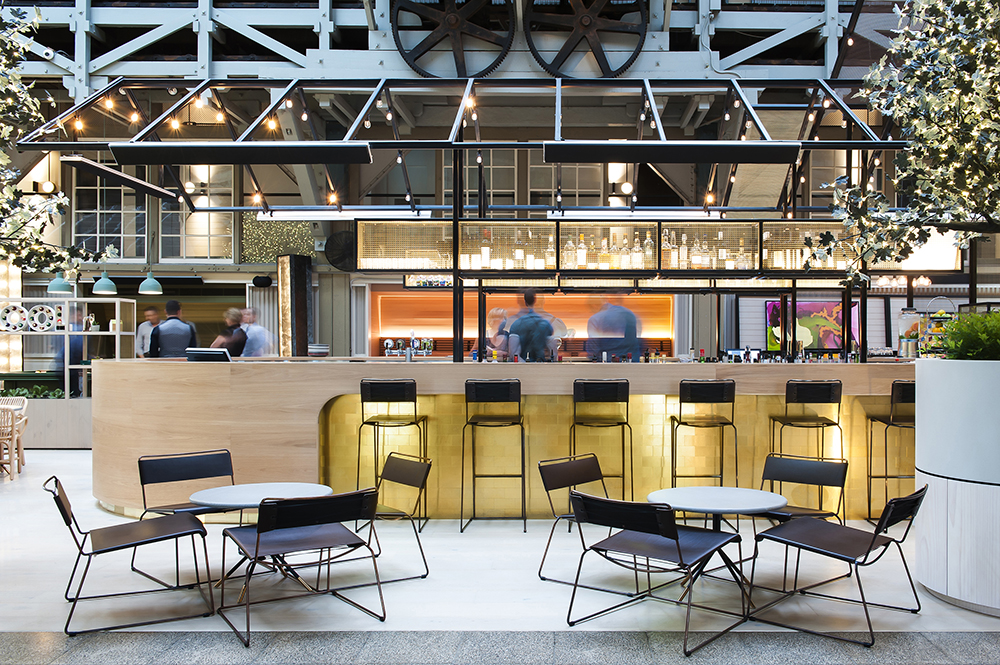HASSELL Principal, Matthew Shang gives his take on the changing face of hospitality design …
The hotel industry is in the midst of a small revolution that is challenging the familiar model and prompting many of the larger operators to create smaller boutique brands that respond to their context and place. And within the Hospitality industry overall, there is a general drive to provide a more authentic and connected experience.
The disruption created by Air BnB has sparked an active outreach from hotel operators to the immediate community. The premise that an Air BnB rental allows travelers to immerse themselves in the finer grain of a city and its urban culture is challenging hotels to enable the same – ‘living as and with the locals’ and encouraging the guest to live as one does in a home.
“Good hotel design shapes our experience and accommodates the fluid transition from one area of our lives to the next”
In response, hotels are creating bespoke food and beverage venues designed to become a neighborhood institution rather than a service point for the hotel (the classic “all day dining”, a buffet restaurant in an often generic and soulless room). Lobbies are now energized places encouraging people to do business there, meet friends and, more often than not, blur those activities. Such venues such as the Coppersmith hotel in Melbourne and Ovolo Wolloomooloo in Sydney have been sensitively designed to embrace their locale and respect their respective rich histories.
In some regions, such as Singapore and south east Asia, where I have lived for the past 15 years, this means coming full circle and almost emulating the colonial model where the hotel was the social touchpoint for locals and expatriates – the palm court of Raffles hotel being a great example of this through to the late 80s.
Good hotel design shapes our experience and accommodates the fluid transition from one area of our lives to the next. With the different facets of our lives increasingly blurring together, such as work and home, private and public, there is a greater expectation that the things around us will support and further enable this blended reality.
Globalisation and social media have built people’s expectations for instant and cutting-edge services that make our lives easier. They’ve brought to life the essential need to create spaces that elicit real emotion and that they want to share with others: tactility and engagement with all the senses are key.
With everything being potentially recorded and shared in its real state in real time, the immediate or spontaneous experience has to be all more authentic and special.
This is what we sought to create with the Club Hotel in Singapore, which includes five food and beverage venues and 20 guest rooms under one roof. It accommodates the adventurous traveler who is looking for a unique experience but also offers a sense of intimacy via styling elements and cues that make it instantly homely and comfortable.
This is created via the natural light in corridors that create a sense of discovery as guests make their way along the passageway layered with paintings, sculptures and mementos. Furthermore, no two rooms are the same, but the sense that guests have been invited into someone’s home is consistent across all the guestrooms.
“A successful and truly unique hospitality experience is established through what we call an authentic narrative”
Similarly, our design of luxury cocktail venue Manhattan Bar in Singapore created a world within a world, modeling a classic American cocktail bar all while working within the confines of a former sports bar within an older hotel institution. The bar itself is shaped as a stage where bartenders perform and entertain while constructing impressive cocktails.
We included a walk-in ‘ingredients’ room at the entrance, filled with potential drink mixers and garnishes, that offers surprise and a sense of luxury from the minute guests arrive.
A successful and truly unique hospitality experience is established through what we call an authentic narrative – what is the key story and how is this narrative going to allow a venue to distinguish itself over its competitors? Critical design aspects such as context, evidence, culture and experience each play an important role in developing this narrative.
The success of places such as the boutique, Mediterranean-styled Halcyon House in northern NSW, Australia, is a result of a clever distillation of its unique narrative. Its context, at beautiful Cabarita beach, is complemented by a multitude of elements, including distinctive and idiosyncratic design that respects the spirit of its location.
The wilderness retreat, Pumphouse Point at Lake St Clair in Tasmania, Australia, is another good example of an authentic narrative. Good design creates a stage that allows guests to feel welcome, inspired, indulged and comfortable. It allows human moments to happen – ‘a moment of delight’ is a tremendously unique thing to craft.
The role of the designer is to give players within the space enough cues and inspiration to make their own discoveries, and to provide the narrative and thoughtful attention to detail that makes each experience personable and memorable.
Matthew Shang is a Principal at international design practice HASSELL. He specialises in hotel and hospitality design.



